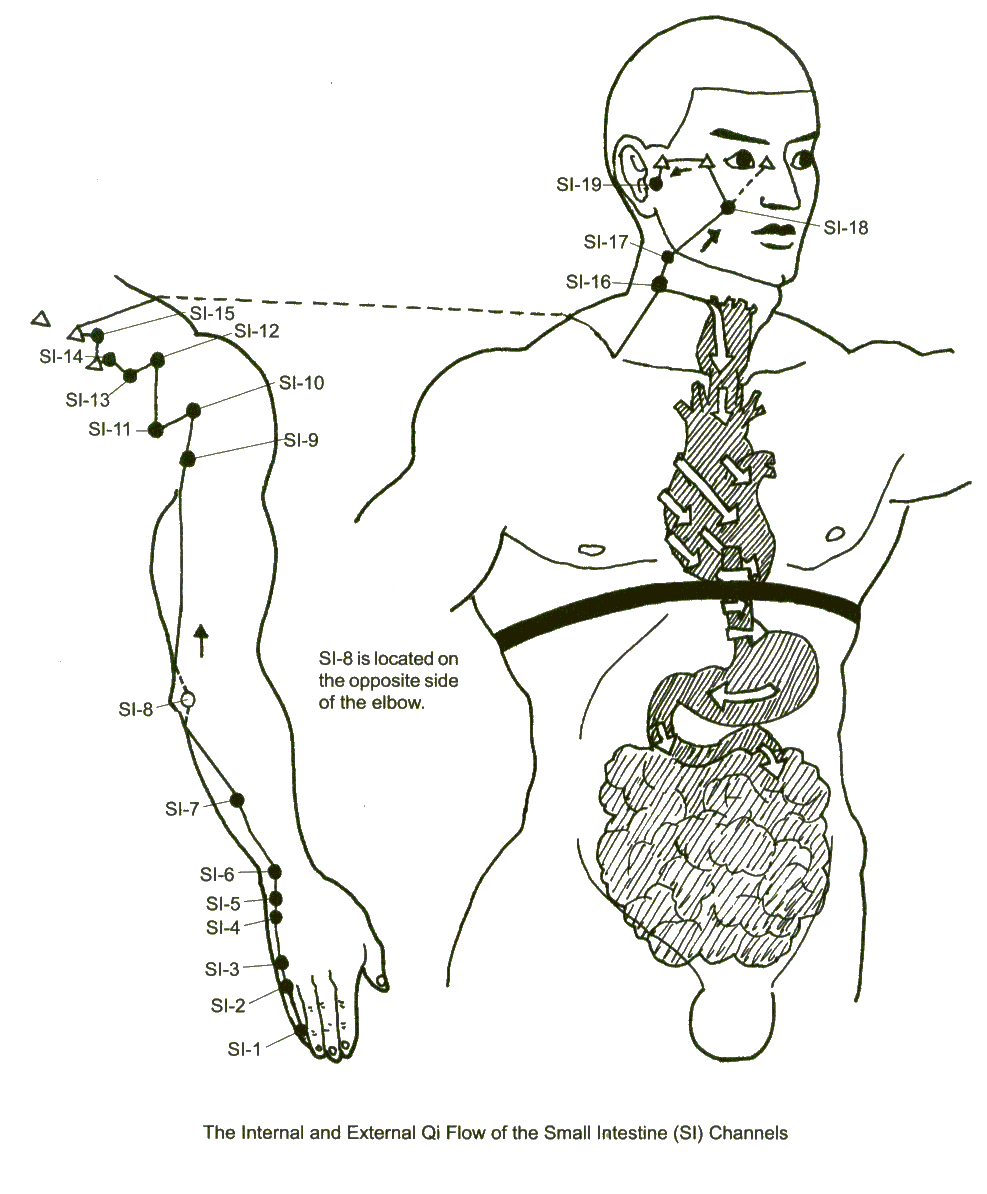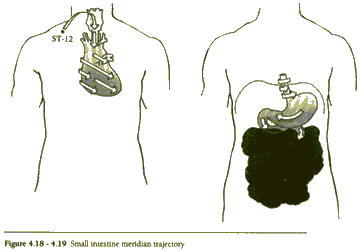
Small intestine: Fire-energy yang organ

Small
intestine: Fire-energy yang organ
Known as the 'Minister of Reception', the small intestine receives partially digested food from the stomach and further refines it, separating 'the pure from the impure', then assimilating the purified nutrients and moving the impure wastes onwards to the large intestine for elimination. Associated with the heart by Fire energy, the small intestine controls the more basic emotions, as reflected in the Chinese term duan chang ('broken intestines'), which is equivalent to the English term 'broken heart'. Its energy meridian runs into the head, where it influences the function of the pituitary gland, the 'master gland' whose secretions regulate growth, metabolism, immunity, sexuality, and the entire endocrine system.
|
Small Intestine |
|
| Paired Organ | Heart |
| Color | pink |
| Peak Hours | 1pm-3pm |
| Physical Branches | blood, tongue, throat, sweat, facial complexion |
| Functions | absorbs nutrients, digestion and elimination |
Small Intestine: Psycho-Emotional Aspects
The Small Intestine influences the patient's mental clarity, judgment, and powers of discernment. The ability to distinguish relevant issues with clarity before making a decision is attributed to the Small Intestine.
The Small Intestine Channel Pathway, Acupuncture Points, and Internal Trajectories
This channel starts on the other corner of the little fingernail from the heart channel and follows the edge of the hand to the wrist, where it turns slightly to flow up the forearm, close to the outer edge of the (ulna) bone. Passing the elbow at the "funny bone", it continues up the back of the arm, behind the shoulder joint. It then curves across the shoulder blade to connect with the governing vessel at GV-14 as do all yang channels. It crosses forward to the hollow above the collarbone where the internal branch penetrates, first to the heart, then along the esophagus to the stomach, before connecting with its own organ, the small intestine. From the collarbone region the superficial path continues up behind the muscle on the side of the neck (sterno-cleido-mastoid), then over the cheek to the ear. Two internal branches separate on the cheek. They lead to the gallbladder channel on the outer corner of the eye, and to the bladder channel at BL-1 on the inner corner.

Internal Trajectories of the Small Intestine Meridian
After rising up the arm from SI-1, a trajectory passes to ST-12:
...then it enters, ST-12, [passes down to] and spirally wraps the heart. It circles down and around the throat [and esophagus], passes through the diaphragm to the stomach, then permeates the small intestine.

This trajectory is generally accepted and uncomplicated. The Lei Jing author comments that CV-10 is the "place of the small intestine". Thus, it may be reflective of the small intestine.